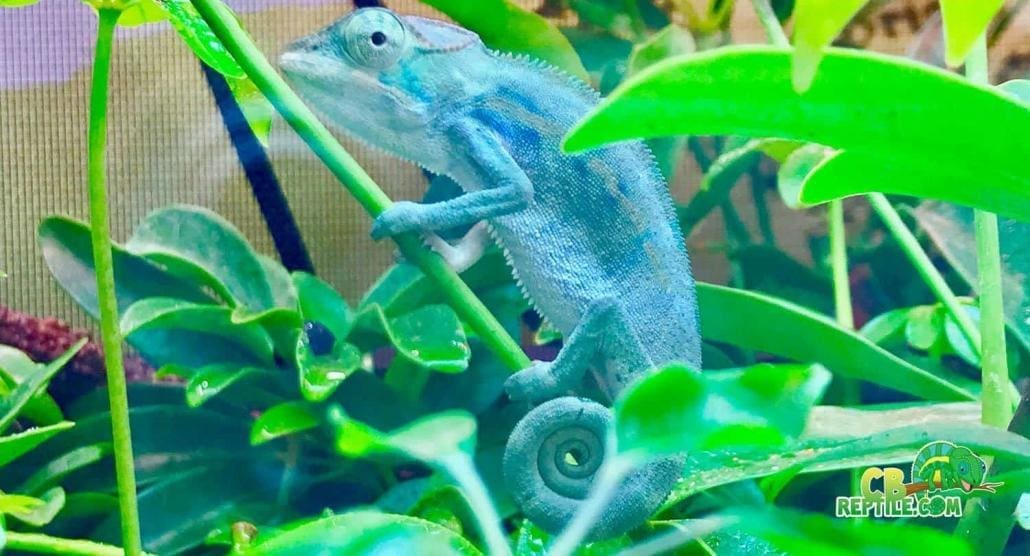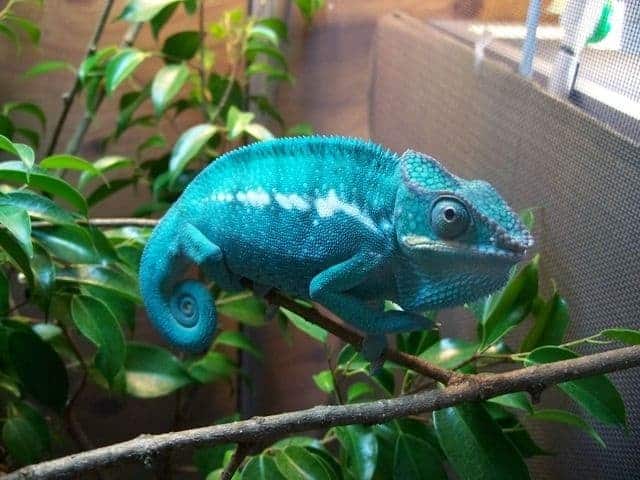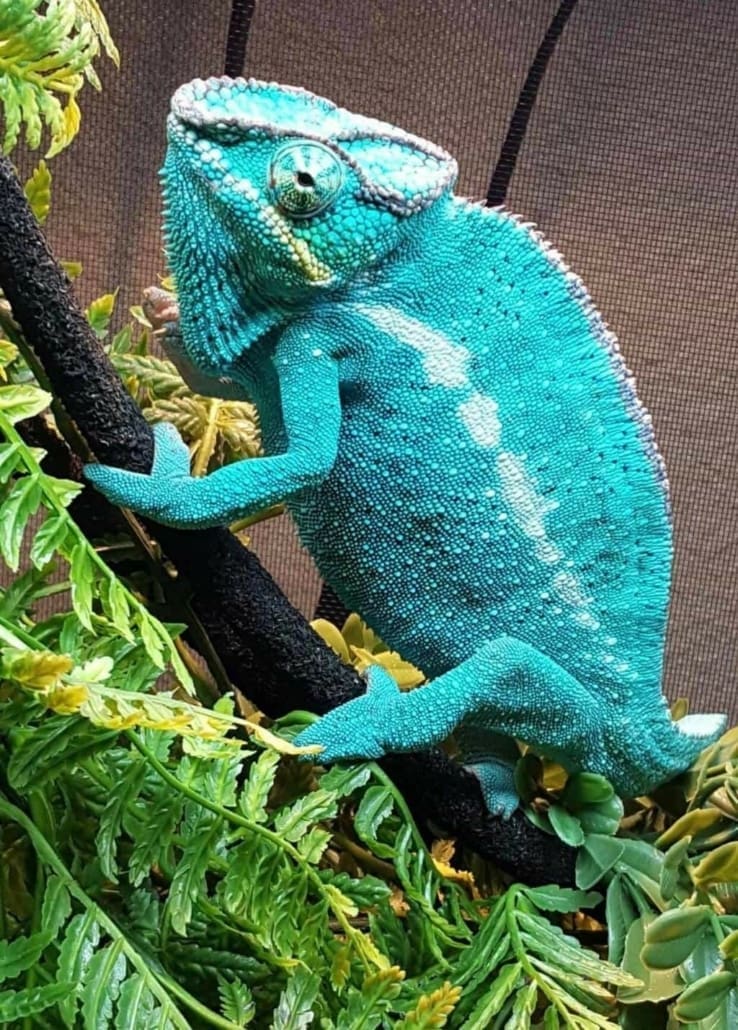Raising Baby Nosy Be Panther Chameleons
Baby Nosy Be panther chameleons are some of the most breathtaking reptiles a keeper can raise. Known for their cool blue, turquoise, and teal adult coloration, Nosy Bes begin life as small, energetic hatchlings with an enormous capacity for growth during their first year. Raising a baby Nosy Be requires precise care—hydration, UVB lighting, feeding frequency, environmental stability, and proper enclosure scaling all play major roles in how your baby develops.

When you begin with a strong, captive-bred juvenile from the best panther chameleon breeder, you dramatically increase your chances of raising a healthy, vibrant adult. Early-life husbandry has long-term effects on bone structure, immune strength, coloration, and growth rate. This guide outlines everything you need to know to raise a baby Nosy Be panther chameleon from hatchling to juvenile—and set the foundation for a stunning adult with rich blues and icy tones.
Why Baby Nosy Bes Require Specialized Care

Raising baby Nosy Be panther chameleons is a rewarding experience, but it requires attention to detail. Hatchlings and babies are far more sensitive to dehydration, temperature fluctuations, feeder size, and enclosure structure than adults. Understanding their vulnerabilities helps you provide an environment that supports rapid, healthy development.
Nosy Bes also tend to grow slightly more slowly than some other locales such as Ambilobe or Sambava. This means keepers must be consistent with hydration and nutrition to unlock their full growth potential. Their calm personality and even behavior make Nosy Be babies excellent for new keepers—provided the husbandry is correct.
Growth Stages of Baby Nosy Be Panther Chameleons
A baby Nosy Be goes through several important growth phases during its first year. Each stage comes with different care needs and behavioral cues.
Stage 1 — Hatchling (0–2 months)
At this stage, Nosy Bes are extremely small. Their bodies require constant hydration and very small prey items. They are fragile but active hunters, often exploring their enclosure enthusiastically.
Stage 2 — Early Juvenile (2–4 months)
Colors remain muted, but faint blue undertones may begin to emerge. Babies gain muscle mass quickly and develop stronger grip strength. Appetite grows significantly.
Stage 3 — Mid Juvenile (4–8 months)
This is when Nosy Bes begin to show early hints of the classic blue pigmentation. Growth rate increases, appetite remains high, and consistent hydration prevents shedding issues.
Stage 4 — Subadult (8–12 months)
The blue saturation intensifies. Bars sharpen. Body size increases rapidly. Proper UVB and diet are essential during this period to support bone density and coloration.

Ideal Enclosure Size for Baby Nosy Be Chameleons
Starting babies in large adult enclosures is a common mistake. Babies need smaller spaces where they feel secure, can find food easily, and can maintain moisture levels around their bodies.
Recommended Enclosure Sizes
- 0–3 months: 16x16x20” hybrid or screen enclosure
- 3–6 months: 18x18x24” enclosure
- 6–12 months: 24x24x48” full juvenile/adult habitat
Hybrid enclosures are excellent for babies because they retain humidity better while still providing ventilation. Nosy Bes thrive in enclosures with multiple climbing pathways, dense foliage, and safe basking gradients.
Essential Setup for Baby Nosy Be Panther Chameleons
Your enclosure should mimic the baby’s natural ecosystem—moist, shady lower zones with branches and bright upper zones for basking.
Must-Have Features
- Horizontal and diagonal branches sized for tiny feet
- Live plants such as pothos for drinking surfaces
- Bright LED plant light for foliage health
- Strong UVB lighting (T5 HO 5.0 or 6%)
- Temperatures of 82–86°F in the baby basking zone
- High humidity overnight with a natural daytime drop

UVB & Lighting for Baby Nosy Bes
UVB exposure affects calcium absorption, bone development, neurological function, and overall vitality. Baby Nosy Bes require the same UVB strength as other locales, but their basking intensity must remain lower to avoid overheating.
Lighting Requirements
- UVB: T5 HO 5.0 (Arcadia 6%)
- Placement: Above the screen top, 8–10 inches from basking branch
- Visible Light: Full-spectrum LED for plant health
- Basking: 82–86°F (babies should not exceed 87°F)
A baby Nosy Be’s body absorbs more heat than an adult, so they require lower wattage bulbs and more shade options. Bright lighting helps bring out early blue hues as babies develop.
Hydration Requirements for Baby Nosy Be Chameleons
Hydration is the single most important factor in raising a healthy baby Nosy Be. Babies dehydrate exceptionally fast because of their small size, high
